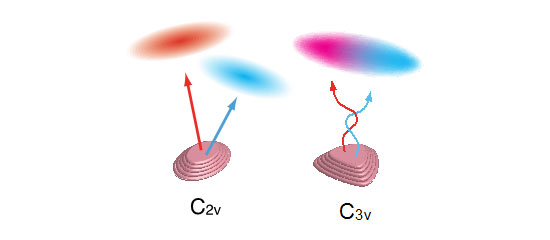Entanglement from Triangular Dots
2013.07.29
(2013.08.21 Update)
National Institute for Materials Science
Hokkaido University
A team headed by Dr. Takashi Kuroda, a Principal Researcher in the NIMS Photonic Materials Unit, and Dr. Takaaki Mano, a Senior Researcher in the same unit, in joint research with Hokkaido University and the University of Toulouse (France), succeeded in developing the world's highest performance entangled photon source by applying an original method to improve semiconductor quantum dots and securing a symmetric quantum dot shape.
Abstract
http://dx.doi.org/10.1103/PhysRevB.88.041306

Figure: Photons emitted from elliptically-shaped quantum dots are not entangled (left), whereas those emitted from triangular quantum dots display quantum entanglement (right).
